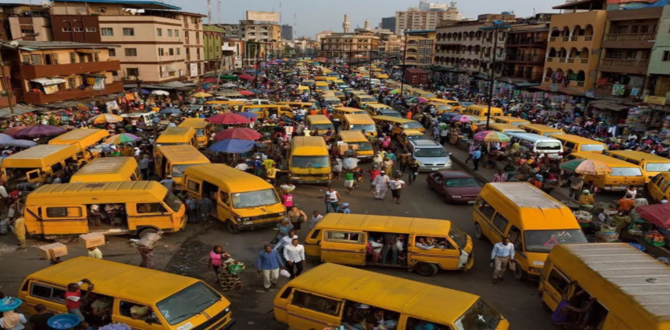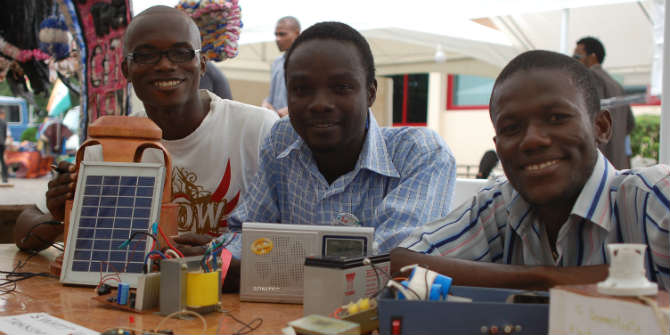Fast growth and increasing levels of inequality have come to characterise many of sub-Saharan Africa’s economic success stories. Understanding the drivers of unequal growth will require looking beyond the narrative of a ‘resource curse’ and exploring macro-economic factors that may also be inhibiting effectiveness of antipoverty programming. In this blog, Dr Daouda Sembene explores the impact of the BWIs-sponsored Poverty Reduction Strategy Papers (PRSPs) on the promotion of pro-poor growth.
There is a broad consensus that sub-Saharan Africa (SSA) has enjoyed strong growth in recent decades, despite increasing inequality. A common misperception is that unequal growth in the region is largely driven by capital-intensive extractive industries. Findings suggest that overemphasis on growth as a component of PRSPs has set some SSA countries on trajectory of unequal growth.

However, many SSA countries that successfully fueled economic activity through improved policymaking and sustained reform implementation have also experienced similar misfortunes. According to a 2013 IMF report on African Economic Outlook, 8 of the 12 fastest-growing economies in sub-Saharan Africa during 1995-2010 were non-resource-rich, low-income countries. These include a number of countries that adopted the Poverty Reduction Strategy Paper (PRSP) approach such as Burkina Faso, Ethiopia, Mozambique, Rwanda, Tanzania, and Uganda.
The evidence reported in a recently published IMF study (Sembene, 2015) confirms that these countries together with their PRSP peers from SSA have broadly embarked since the early 1990s on a path of rapid growth, coupled with pro-rich income distributional patterns.
It is highly counter-intuitive that countries implementing PRSPs have experienced highly unequal levels of growth. Indeed one would have expected countries that embraced the PRSP approach with the aim of poverty alleviation to end up riding a path of more inclusive growth.
Sources of unequal growth in Sub-Saharan Africa
The literature has raised, directly or indirectly, several concerns about the pattern of unequal growth in SSA in relation to a number of unintended features of the PRSP approach. These include—but are not limited to—a lack of ownership, capacity and financing constraints, inadequate pro-poor budgetary allocations, and ineffective targeting schemes. For instance, the IEO (2004) finds evidence of weak ownership outside the narrow official policy circles and existing capacity constraints.
In addition, very small budget shares were typically allocated by SSA governments to large-scale antipoverty programmes, such as cash-transfers although these were demonstrated to have been effective in many countries around the world (Kakwani et al., 2005). Similarly, many pro-poor interventions were found to be ill-targeted, notably those related to school-feeding programmes (Bundy et al., 2009).
As a result of these shortcomings, the ability of PRSP policies to make the poor better off has been limited in many SSA countries in spite of their strong growth performance.
Policy implications
Going forward, reversing the trend of unequal growth in SSA countries will require a renewed sense of urgency about the need to reduce existing social disparities. Indeed, firm evidence suggests that increasing inequality is beginning to obstruct strong growth, limiting beneficial impact on poverty. Concrete actions will need to be taken for real progress to follow.
There is a critical need to improve the effectiveness of the large panoply of pro-poor policies and programs undertaken in the context of PRSPs, including conditional and unconditional cash transfers, in-kind transfer schemes, and public works programs. In particular, greater effort is needed to improve programme targeting towards the needs of the poor. This must be developed while ensuring the adequacy and sustainability of associated budgetary allocations. Critically, the success of such endeavors will require taking appropriately into account the prevailing political economy considerations that tend to constrain the intended positive impact of antipoverty interventions.
In addition to redistributive activities, SSA governments could make headway towards shared prosperity by fostering inclusion and creating more income-generating opportunities for excluded and vulnerable groups. This is particularly relevant in countries faced with sources of exclusion such as ethnic tensions, deeply rooted gender inequality, high youth unemployment, and the challenges of being landlocked. Obviously, creating more income-earning opportunities for the vulnerable and poorest segments of society will require sustaining the buoyant growth that the region has enjoyed in the past few decades.
More generally, greater empowerment of people at the bottom percentiles of the income distribution will help overcome the propensity of those at the top to benefit more than proportionately from growth. Indeed Sembene (2015) finds evidence of higher-than-average increases in the share of income accruing to SSA countries’ top quintile, as income grows amid PRSP implementation. Under these circumstances, instilling a pro-poor pattern of income distribution in the region may prove elusive even in the context of strong growth. A critical precondition for achieving this goal will continue to be strong political commitment at the highest level.
This article was first published on the IGC blog.
Daouda Sembene is an advisor to Senegal’s Ministry of Economy, Finance, and Planning.
The views expressed in this post are those of the authors and in no way reflect those of the Africa at LSE blog or the London School of Economics and Political Science.
Further Reading
Bundy, Donald; Carmen Burbano; Margaret Grosh; Aulo Gelli; Matthew Jukes; and Lesley Drake (2009); Rethinking School Feeding: Social Safety Nets, Child Development, and the Education Sector, The World Bank, Washington DC.
Desai, Raj M. (2007), “The Political Economy of Poverty Reduction—Scaling Up Antipoverty Programs in the Developing World,” Wolfensohn Center for Development at the Brookings Institution, Working Paper 2, Washington, DC.
Independent Evaluation Office of the International Monetary Fund (2004), “Report on the Evaluation of Poverty Reduction Strategy Papers and the Poverty Reduction Growth Facility,” International Monetary Fund, Washington, DC.
International Monetary Fund (2013), Regional Economic Outlook—Sub-Saharan Africa: Keeping the Pace, IMF African Department, October 2013, Washington, DC.
Kakwani, Nanak, Fábio V. Soares, and Hyun H. Son (2005), “Conditional Cash Transfers in African Countries,” UNPD International Poverty Centre, Working Paper No. 9, Brasilia.
Sembene, Daouda (2011), Poverty and Institutions, American University, Washington DC.
Sembene, Daouda (2015), “Poverty, Growth, and Inequality in Sub-Saharan Africa: Did the Walk Match the Talk under the PRSP Approach?” IMF Working Paper WP/15/122, June 2015, Washington, DC.





